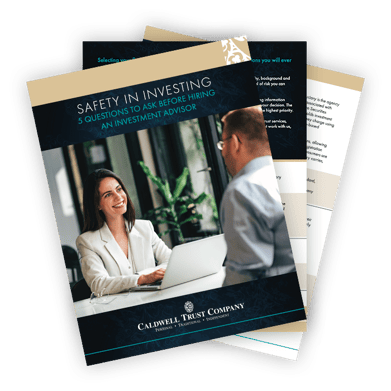
Would it surprise you to learn that more Americans are losing sleep over their finances now than they did during the Recession? Nearly two-thirds of all Americans (65%) are losing sleep over their money worries, which is up 3% from the financial crisis, and more than a third of those (37%) are sleepless thanks to worrying about their retirement. But planning for retirement doesn’t have to fuel your anxiety. Today’s post will give you an overview of how much you need to save for retirement, discuss planning for retirement, and share tips to help you get started.
What You Need To Retire
This is probably one of the first questions people ask, but it’s also not the easiest to answer. How much you need to save depends on a variety of factors, including the lifestyle you have now, the lifestyle you plan to have when you retire, your current income and bills, and inflation.
To calculate this, you can look at it in one of two ways: working backward with the 4% rule, or projected spending. According to the 4% rule, you take the annual amount you want to receive in retirement per year and divide it by 4%, which is the maximum amount you can withdraw from savings to pay for your retirement annually. So if you want to have $50,000 available annually, you’d need to have $1.25 million in retirement funds. It bears noting that in order to achieve this, you need to be getting at least 5% returns on your retirement savings.
According to projected spending, you gauge what you need for retirement based on one of three percentages: 70% if you intend on being more frugal, 80% on average, or 90% if you plan to spend more lavishly. You apply this percentage against the income you’re making now, or the average income you expect to be making in the decade before retirement.
Essentially, you want to replace that percentage of your income per year through savings and Social Security as the amount you have available in retirement. That means someone who was earning $63,000 annually before retirement would generally need between $44,000 and $57,000 per year once they do retire.
Remember that you need to provide yourself some wiggle room as well. Health costs are rising — in fact, that’s the biggest financial concern keeping Americans up at night — and you can be sure that even in reasonably good health, healthcare will take an all too healthy chunk of your budget. In fact, the average 65-year-old couple will spend roughly $260,000 in out-of-pocket healthcare costs across the length of their retirement.
Planning for Retirement
Don’t make the mistake of depending on a pension or a Social Security check to cover your needs after you retire. Planning for retirement allows you the freedom to do all the things with that time that you want to without having to count your pennies.
The first step is obviously to estimate how much you think you’re going to need, as we discussed in the last section. Once you’ve done that, you can evaluate how much you’ll get from Social Security; you should receive a statement in the mail, or you can retrieve it online from the official government website. At this point, you should add in the expected funds from any pensions or annuities. Now you will need to sit down and take a serious look at your level of debt and determine whether it will be paid off before you retire. If not, that cost needs to be added to your post-retirement expenses.
This allows you to determine the amount you’ll need in savings to meet your retirement goals. You may even be able to determine if you can retire early, but remember that if you start your retirement benefits early, there may be a reduction in those benefits. Working after you retire may also impact the amount of the benefits you receive. If your employer provides one, take advantage of the 401(k). If you’re self-employed, you may be eligible for a Solo 401(k). In other circumstances, you’ll need to tap another investment option, such as an IRA, Roth IRA, or SEC. These investments will provide the level of interest necessary to save the amounts you need for financial security.
Remember to check in on your plan regularly. You may need to adjust how much you’re contributing based on changes in the economy or your job status, or you may need to adjust it based on your changing plans for the future.
How to Get Started
First things first: Get serious about your retirement. Learn about all of your options now, put a plan together, and put it into place. The sooner you start to save, the better funded your retirement will be. This goes hand in hand with a few shifts in perspective and in lifestyle: set a budget that allows you to pay off your debt while saving for retirement, make all your spending intentional, and consider trimming back on the little extravagances. After all, you should be able to enjoy life now, but not at the total expense of being able to enjoy life at the age of 70. Here are a few more tips:
- Use financial advisers or similar firms and experts. They understand how inflation and other changes in the economy can impact your retirement, and because they’re up on the latest tools and best practices, they can help you identify needs or other ways to save that you may have missed.
- Leverage tools like a retirement calculator. These calculators are based on projections and a variety of information that you put in, so they aren’t exact, but they can help you gauge how well you’re saving along the way.
- The Social Security Administration also provides a retirement estimator that helps you evaluate your Social Security benefits. There’s also a benefits calculator to help you test different retirement ages and amounts of future earnings.
- Invest in a diversified growth portfolio that provides 6% to 7% annually. The compound interest on these types of portfolios helps to guarantee you’ll fulfill your long term retirement goals.
- Take advantage of employer matching and catch up contributions. These are funds that can help you a great deal in your retirement, and you shouldn’t leave that money on the table.
Remember, planning for retirement doesn’t need to become a major stressor in your life. Take the time to understand where you are now financially, and take the process one step at a time. Start now to give your savings time to appreciate.
And, of course, don’t forget that you don’t have to do this planning on your own. Tap the expertise of financial advisers like Caldwell Trust Company to get a complete picture of what you need to do and the best ways to save.










